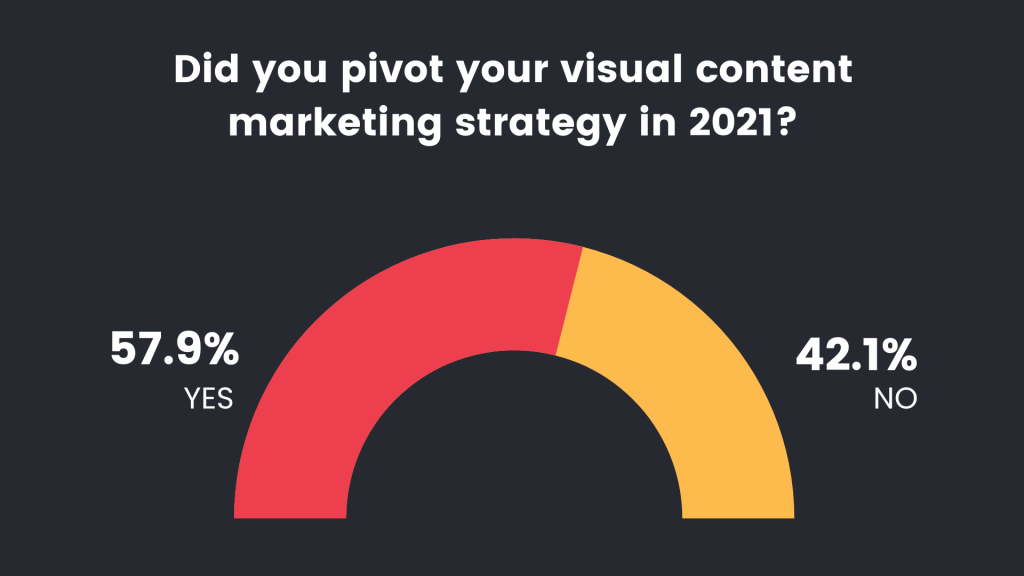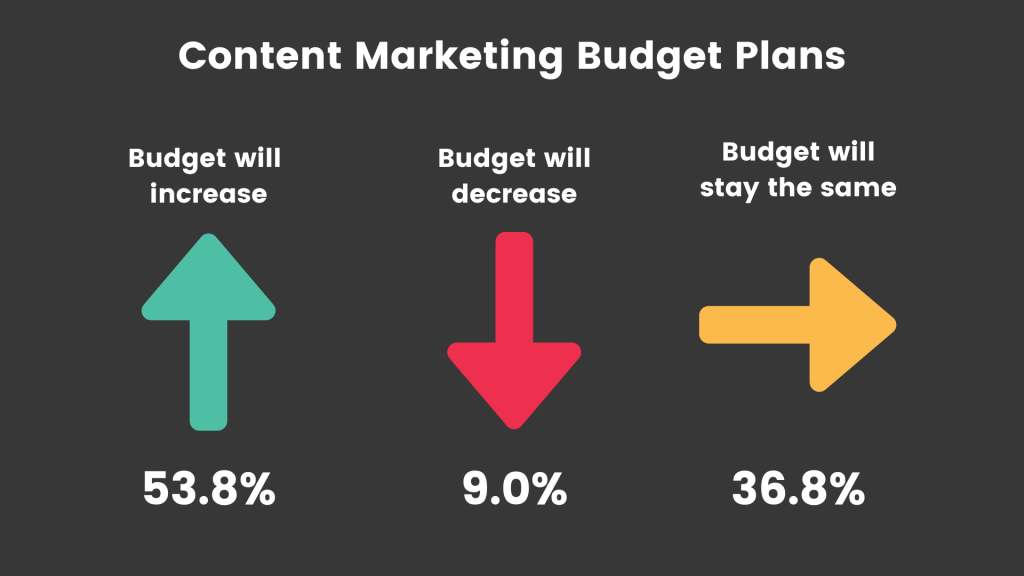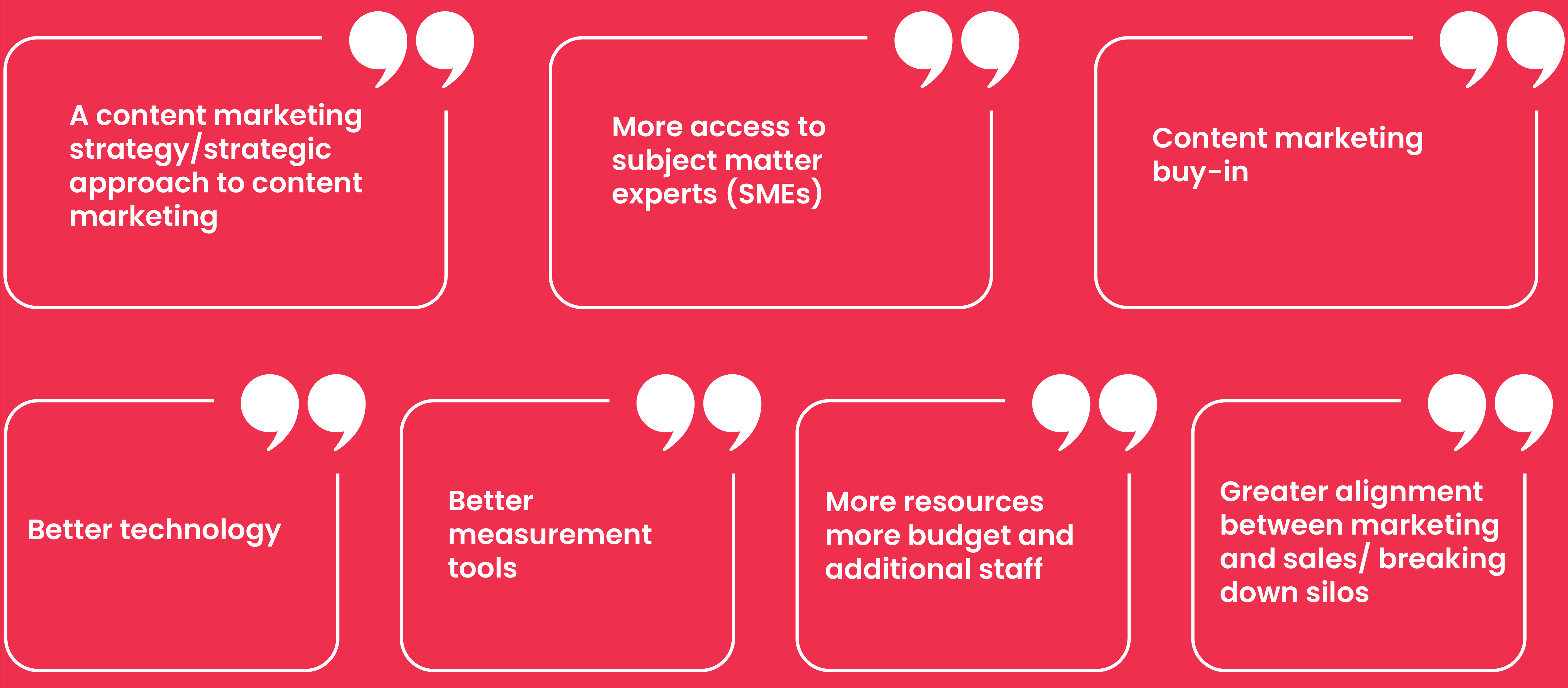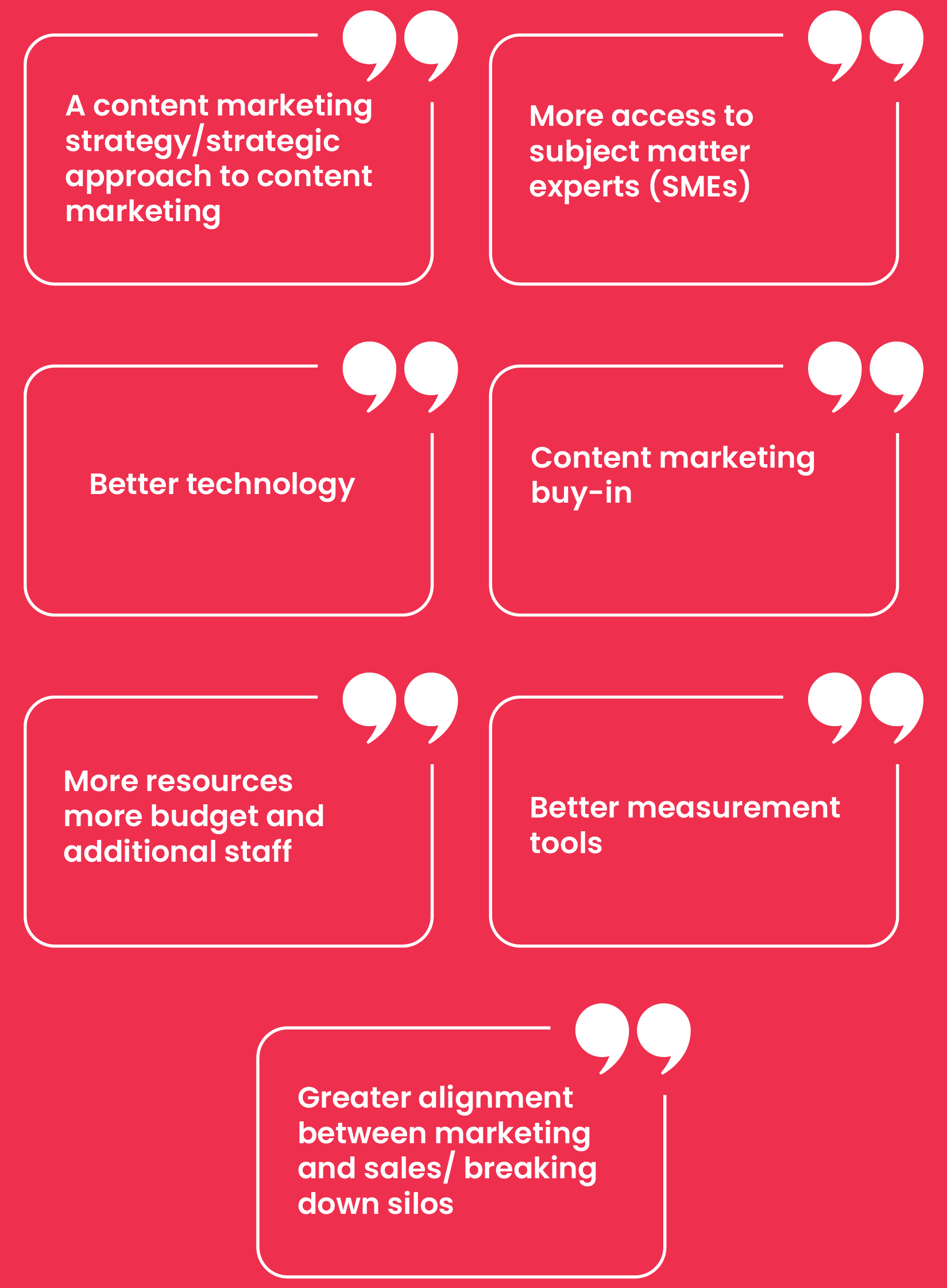Unveil the latest insights, trends, and data-driven strategies that empower businesses to achieve remarkable results.
Content marketing has become indispensable for businesses seeking to connect with their target audiences in the digital age. As the demand for valuable and engaging content continues to rise, understanding the latest content marketing statistics is crucial for crafting effective strategies.
This article provides a concise overview of the most compelling data points and insights in content marketing. Whether you’re a seasoned marketer or a newcomer, these statistics will inform and optimize your content marketing efforts.
Content marketing has witnessed a significant surge in importance for organizations in the past year, as revealed by a staggering 71% of content marketers.
of content marketers reported that content marketing has witnessed a significant surge.
of businesses that invest a substantial amount on a single content piece acknowledge their strategy as highly successful.
of marketers rely on a single individual or a small group to handle all types of content production.
This increased recognition is attributed to the realization that quality is significant in content marketing success. In fact, 54% of businesses that invest a substantial amount, exceeding $2,000, on a single content piece acknowledge their content marketing strategy as highly successful.
On the other hand, businesses that allocate minimal funds to content marketing struggle with aspects such as publishing volume, lead generation, and measuring return on investment (ROI).
On the other hand, businesses that allocate minimal funds to content marketing struggle with aspects such as publishing volume, lead generation, and measuring return on investment (ROI).
Notably, there has been little progress in marketers adopting a documented content marketing strategy, with the figure remaining stagnant at around 40% year after year. This lack of strategy leads to a situation where numerous content marketers are simply producing content for the sake of it, often as a response to ad hoc requests.
Content marketing requires a well-defined strategy backed by sufficient resources to achieve true effectiveness. Unfortunately, many content marketers work in isolation or with a small team, attempting to handle an overwhelming workload.
Research revealed that 46% of marketers rely on a single individual or a small group to handle all types of content production.
But, how did these companies achieve this level of success? Well, there are several factors that could lead to success in content marketing, but researching the audience and SEO are highly valued, with 47% and 46% of successful companies prioritizing these aspects, respectively.
Publishing more content and increasing posting frequency (45%) is also a common approach to maintaining a strong presence.
Additionally, the statistic reveals that only 29% of the organizations have achieved a high level of success in content marketing, either being extremely or very successful. This highlights the presence of a select group of top performers within the field which should be taken as an example.
But, how did these companies achieve this level of success? Well, there are several factors that could lead to success in content marketing, but researching the audience and SEO are highly valued, with 47% and 46% of successful companies prioritizing these aspects, respectively.
Publishing more content and increasing posting frequency (45%) is also a common approach to maintaining a strong presence.
Additionally, the statistic reveals that only 29% of the organizations have achieved a high level of success in content marketing, either being extremely or very successful. This highlights the presence of a select group of top performers within the field which should be taken as an example.
But, how did these companies achieve this level of success? Well, there are several factors that could lead to success in content marketing, but researching the audience and SEO are highly valued, with 47% and 46% of successful companies prioritizing these aspects, respectively.
Publishing more content and increasing posting frequency (45%) is also a common approach to maintaining a strong presence.
Moreover, according to marketers, in-person events were identified as the most effective content marketing channel in the past 12 months, with 48% of respondents acknowledging their superior results. Virtual events (47%) emerged as a close second, closely followed by research reports (46%).
Hence, 52% of marketers anticipate an increase in their investment in in-person events for 2023. On the other hand, the expected investment in digital/virtual events has decreased to 25% from 33% compared to last year, whereas 42% of marketers expect the investment in digital/virtual events to remain the same.
Notably, there have been significant shifts in expectations regarding hybrid events. While 23% anticipate an increase in investment, 10% expect a decrease, and 28% reported that they will not use hybrid events at all.
The data indicates a growing trend this year, showing that achieving higher organic rankings, regardless of the company’s size, is strongly correlated with creating and posting more content regularly, as 55% of organizations focus on this strategy.
Improving content quality and value closely followed at 53%, demonstrating the emphasis on delivering high-quality and valuable material to engage audiences. Other notable strategies include creating research-driven content (37%), paying attention to keyword research (36%), and analyzing search intent (35%).
Yet, ranking in search engines continues to be a challenge for 29% of companies. Whereas 45% struggle with attracting quality leads with their content.
Brands have a stronger online presence than ever before. Content has evolved to be more visually engaging, emphasizing rich media such as videos that have reached unprecedented levels.
In 2021, a significant majority of marketers, accounting for 57.9%, undertook a shift in their visual content marketing strategy by rebranding or refreshing their visual identity in various ways to ensure high-quality design and establish a unified and consistent online presence.

The use of visuals in content marketing continues to grow yearly. In 2018/19 majority of marketers reported that 71% of their content contained visuals.
Online tools or graphic makers
In-house designer
Advanced design softwares
Freelance/contract designers
While a fortunate 28% of marketers have the advantage of an in-house designer at their disposal, approximately 35.5% of marketers leverage online tools or graphic makers for the creation of visual content.
However, when it comes to producing visual content consistently, 31.8% of marketers are still struggling, with 78.6% of them rating it on a difficult scale of 5 or higher.
Despite these challenges, all marketers acknowledge the importance of visual content as a part of their marketing strategy, with more than half of them considering it essential.
Furthermore, organizations that allocate 10%-50% of their content marketing efforts towards content design are 33% more likely to report highly successful outcomes compared to those who allocate no resources in that direction.
90% of organizations prioritize their website as a key channel for content distribution.
The statistics provide insights into the various content distribution channels utilized by organizations. It reveals that 90% of organizations prioritize their website as a key channel for content distribution. Blogs are also highly valued, with 78% followed by email newsletters (69%) and other forms of email communication (67%), which are also popular choices for content dissemination.
Post-pandemic with in-person events regaining momentum, an increasing number of marketers are actively engaging in public speaking and presenting. Moreover, there has been a rise in speaking engagements from 52% to 64% compared to the previous year. Similarly, the percentage of marketers involved in guest post writing has risen from 43% to 50% over the same period.
The statistics provide insights into the various content distribution channels utilized by organizations. It reveals that 90% of organizations prioritize their website as a key channel for content distribution. Blogs are also highly valued, with 78% followed by email newsletters (69%) and other forms of email communication (67%), which are also popular choices for content dissemination.
Post-pandemic with in-person events regaining momentum, an increasing number of marketers are actively engaging in public speaking and presenting. Moreover, there has been a rise in speaking engagements from 52% to 64% compared to the previous year. Similarly, the percentage of marketers involved in guest post writing has risen from 43% to 50% over the same period.
Among organic social media platforms, LinkedIn emerged as the most widely utilized and effective (60%) platform for B2B content marketers. In contrast, Facebook received the lowest ratings, with 37% of marketers indicating that it was not very effective or not effective at all.
|
Platform |
Extremely Effective |
Very Effective |
Somewhat Effective |
Not Very Effective |
Not At All Effective |
|---|---|---|---|---|---|
|
LinkedIn |
21% |
39% |
33% |
6% |
1% |
|
Facebook |
5% |
18% |
41% |
31% |
6% |
|
Twitter |
3% |
14% |
47% |
28% |
8% |
|
YouTube |
9% |
29% |
45% |
15% |
2% |
|
Instagram |
6% |
19% |
44% |
27% |
5% |
The use of paid content distribution experienced a decline from 81% to 67% compared to the previous year.
A mere 10% of companies engage in monetizing their content, primarily through sponsorships and advertising, as reported by 52% of organizations. The utilization of paid or premium content closely follows at 48%, while affiliate relationships serve as a monetization method for 39% of these companies.
61% of marketers had insights into their company’s content marketing budget.
Budgeting in content marketing involves allocating and managing financial resources to support content creation, distribution, promotion, and measurement activities. Effective budgeting is crucial for successful content marketing strategies and achieving desired business outcomes.
The marketing budget allocation to content marketing remained relatively consistent compared to 2022. 61% of marketers had insights into their company’s content marketing budget. Among them, 23% reported that their organization allocated 50% or more of its marketing budget to content marketing initiatives.
Budgeting in content marketing involves allocating and managing financial resources to support content creation, distribution, promotion, and measurement activities. Effective budgeting is crucial for successful content marketing strategies and achieving desired business outcomes.
The marketing budget allocation to content marketing remained relatively consistent compared to 2022. 61% of marketers had insights into their company’s content marketing budget. Among them, 23% reported that their organization allocated 50% or more of its marketing budget to content marketing initiatives.
When it comes to content cost per piece, 44.4% reported that the average cost is up to $500. Approximately 28.6% stated the average cost to be between $500-1k. The percentages decrease as the cost increases, with 6.4% at $2k-3k, 1.1% at $3k-4k, and 3.8% indicating an average cost exceeding $4k.
Technology plays a crucial role in content marketing, enabling marketers to streamline processes, enhance efficiency, and deliver targeted and personalized experiences to their audiences.
Analytics tools and social media publishing take the lead as primary technologies that companies use to manage their content.
However, the majority of companies (61%) still haven’t acquired the right technology – or have the technology but aren’t using it to the full potential.
Emerging technologies such as artificial intelligence (AI) also impact content marketing. AI-powered tools can assist in generating content ideas, personalizing experiences, and automating processes.
Among businesses implementing AI content generation tools, 19% reported having a highly successful content strategy. In contrast, 24% of companies that do not use AI content generation tools also reported experiencing a very successful content marketing strategy.
This suggests that while AI tools can be beneficial, they can be supplemented with other strategies and considerations for optimal outcomes.
Emerging technologies such as artificial intelligence (AI) also impact content marketing. AI-powered tools can assist in generating content ideas, personalizing experiences, and automating processes.
Among businesses implementing AI content generation tools, 19% reported having a highly successful content strategy. In contrast, 24% of companies that do not use AI content generation tools also reported experiencing a very successful content marketing strategy.
This suggests that while AI tools can be beneficial, they can be supplemented with other strategies and considerations for optimal outcomes.
Yet, in 2023, the intention to leverage AI content generation tools for content marketing efforts is evident, with 62% of B2B businesses and 38% of B2C businesses expressing plans to adopt these tools.
Four out of five marketers (81%) now engage in assessing and evaluating the effectiveness of their content.
of marketers use website traffic to track content performance
of marketers use email and website engagement traffic to track content performance
of marketers use conversions to track content performance
For businesses to measure the effectiveness of their strategies, track performance, and drive desired outcomes, they should have metrics and goals. Some common metrics include performance, website traffic, engagement metrics, conversion rates, lead generation, and so forth.
Four out of five marketers (81%) now engage in assessing and evaluating the effectiveness of their content initiatives, mainly using website traffic (86%), email, and website engagement (83%).
For many marketers, bridging the gap between content, experiences, data, and measurement across various platforms poses a challenge. The primary hurdle faced by 48% of B2B marketers in measuring content performance is the difficulty in integrating and correlating data across multiple platforms.
In 2021, 66% anticipated an increase in their content marketing budget for the following year, 2022. However, in 2022, only half of marketers believed their content marketing budget for 2023 would experience growth. This cautious outlook indicates a sense of prudence and careful consideration amid an unpredictable economic climate.
The marketing cost is substantial, so the reported numbers are not surprising. Moreover, 54% of businesses planning to increase their marketing budget indicate a continuous improvement in content quality. However, even 37% of companies operating with tighter budgets still reported success in their content marketing efforts.

These platforms serve as essential tools for calculating revenue coming from leads and conversions generated by content marketing (67%) or calculating revenue generated from organic traffic (48%) among others.
In this section, we will elaborate on what the marketers anticipate for content marketing in the upcoming years.
of content marketers reported that their organizations plan to invest or continue investing in video.
of marketers plan to invest in owned-media assets
of marketers plan to invest in social media/community building
of marketers plan to invest in User Experience (UX) design
The investment in video content is expected to witness continued growth. In 2023, 78% of content marketers reported that their organizations plan to invest or continue investing in video, a notable increase from 69% in the previous year.
Additionally, there were significant increases in the number of marketers planning to invest in owned-media assets (69% compared to 57% in the previous year) and social media/community building (57% compared to 39% in 2022).
These findings indicate a growing recognition of the value and effectiveness of video content and the importance of owned-media assets and social media in content marketing strategies.


The statistics surrounding content marketing provide valuable insights into the evolving landscape of digital marketing. They reveal the increasing importance of content marketing in building brand awareness, credibility, and engagement across various industries.
As the content marketing landscape evolves, staying abreast of the latest trends and leveraging effective strategies will be key to achieving success in the ever-competitive digital space.